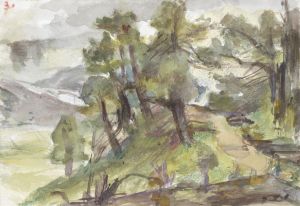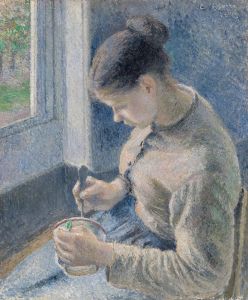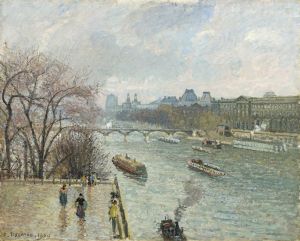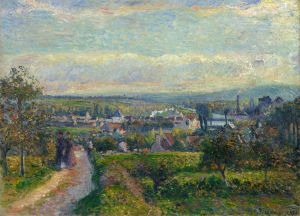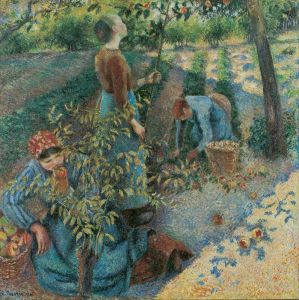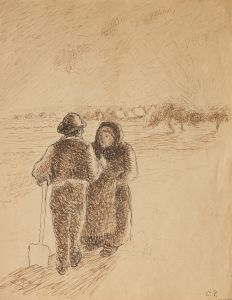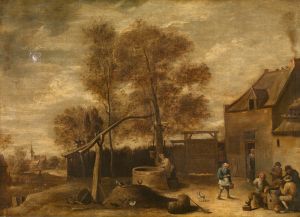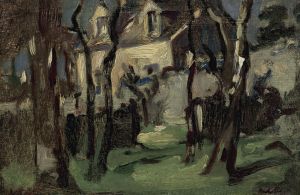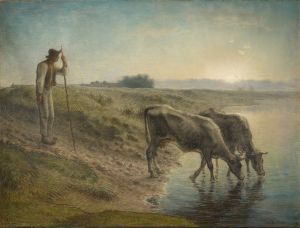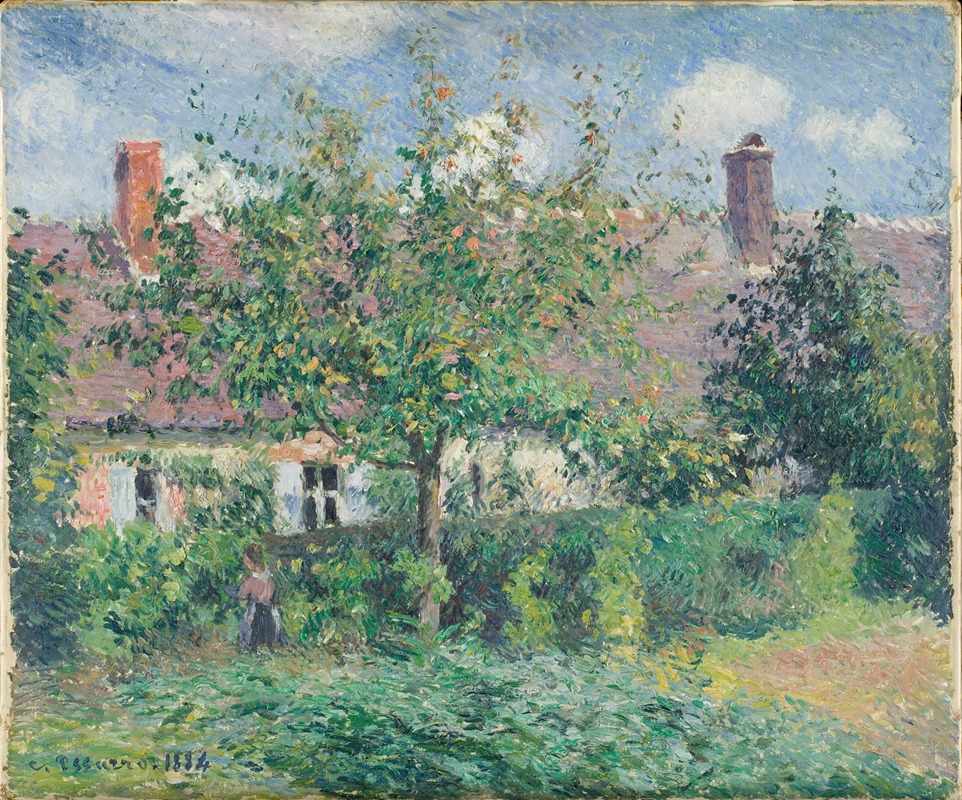
Peasant House at Éragny
A hand-painted replica of Camille Pissarro’s masterpiece Peasant House at Éragny, meticulously crafted by professional artists to capture the true essence of the original. Each piece is created with museum-quality canvas and rare mineral pigments, carefully painted by experienced artists with delicate brushstrokes and rich, layered colors to perfectly recreate the texture of the original artwork. Unlike machine-printed reproductions, this hand-painted version brings the painting to life, infused with the artist’s emotions and skill in every stroke. Whether for personal collection or home decoration, it instantly elevates the artistic atmosphere of any space.
Peasant House at Éragny is an oil painting created by the French Impressionist and Neo-Impressionist artist Camille Pissarro. Painted in 1887, the artwork depicts a rural scene in Éragny-sur-Epte, a small village in northern France where Pissarro lived and worked for many years. The painting is characteristic of Pissarro's focus on rural life and his dedication to capturing the natural beauty and simplicity of the countryside.
Camille Pissarro moved to Éragny in 1884, purchasing a house with the financial assistance of his dealer, Paul Durand-Ruel. The village and its surrounding landscapes became a central theme in Pissarro's work during this period. He was deeply inspired by the pastoral environment, and his paintings from Éragny often reflect his interest in the lives of peasants, agricultural labor, and the changing seasons. Peasant House at Éragny is one such example, showcasing Pissarro's ability to combine his Impressionist roots with a more structured approach influenced by Neo-Impressionism.
The painting portrays a modest peasant house surrounded by lush greenery, with trees and plants framing the composition. Pissarro's use of light and color is notable, as he employs a harmonious palette of greens, browns, and soft blues to evoke the tranquil atmosphere of the rural setting. The brushwork is loose yet deliberate, capturing the textures of the foliage and the rustic charm of the house. This work exemplifies Pissarro's skill in rendering natural light and his sensitivity to the subtleties of the landscape.
During the time this painting was created, Pissarro was experimenting with techniques inspired by Neo-Impressionism, particularly the pointillist methods developed by Georges Seurat and Paul Signac. While Peasant House at Éragny does not fully adhere to the pointillist style, it reflects Pissarro's exploration of more systematic approaches to composition and color. This period marked a transitional phase in his artistic career, as he sought to balance the spontaneity of Impressionism with the scientific precision of Neo-Impressionism.
Today, Peasant House at Éragny is recognized as an important work within Pissarro's oeuvre, highlighting his commitment to depicting rural life with authenticity and respect. The painting is housed in a public or private collection, though specific details about its current location may vary. Camille Pissarro's contributions to both Impressionism and Neo-Impressionism have solidified his legacy as one of the most influential artists of the 19th century, and works like Peasant House at Éragny continue to be celebrated for their beauty and historical significance.





